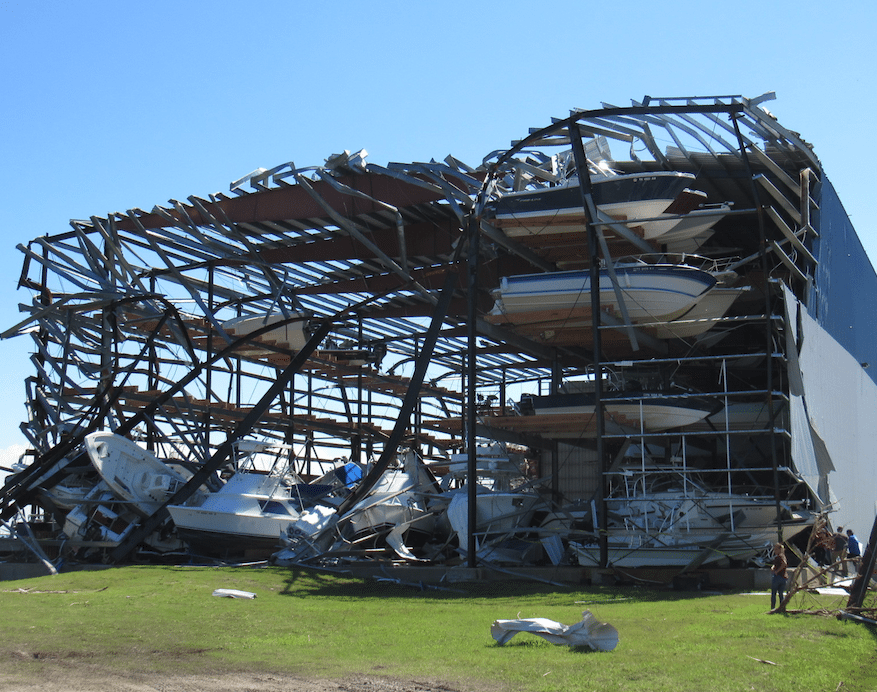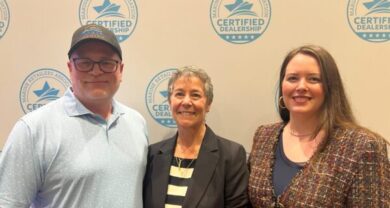BoatUS provides post-hurricane update on Texas recreational boat salvage

With Tropical Storm Harvey making its final Texas landfall and slowly dissipating, field reports assessing the damage to recreational boating are starting to arrive.
The BoatUS Catastrophe Team reports that Aransas Pass, Port Aransas and Rockport in Texas were the hardest hit areas for recreational boats and marinas when the hurricane made its initial landfall.
Salvage operations are underway in those areas, said BoatUS Public Affairs Vice President Scott Croft.
“We actually started bringing people down over the weekend,” Croft told Boating Industry, shortly after he had received a field update late Wednesday afternoon. “Our team pretty much had to hopscotch through several states to get down there because of access issues. Nobody could fly into Houston.”
According to Croft, access to many areas was still cut off as of Wednesday, and at least one hard-hit marina owner was advising boat owners to stay home.
Cove Harbor Marina in Rockport took a direct hit from Hurricane Harvey, and its dry stack sustained significant damage.
A notice on Cove Harbor’s website stated, “Our goal is to secure the property, survey the damage, and assess future operation as quickly as possible. Please do not visit the drystack and marina site until we notify you due to potentially unsafe conditions. When basic infrastructure is back in place, we will provide you with updated contact information”
“There are avid boaters who want information now, but they aren’t going to know the extent of damage, whether it’s a boat yard, marina or boat club,” Croft said. “Rockport was square in the eye. They got walloped. We don’t have a lot of details just yet, but again, salvage efforts are underway.”
Many of the independent insurance surveyors sent by BoatUS to assess hurricane damage have more than 30 years experience, Croft said.
“They are called up for a period of time to serve on our CAT team, alongside BoatUS staff. We are probably going to have surveyors up and down the coast for 100 miles or so because of anticipated losses. We don’t have a storage yard assigned yet, and we are still working assigning a number for damaged vessels. Right now, the concern is salvage triage.”
According to Croft, getting into the hardest-hit storm areas will remain the primary challenge over the next few days and into next week.
Numerous trucks, lowboys, cranes and heavy lifting equipment will have to come from the Houston region, which was hit by historic flooding.
“It’s going to be a challenge getting resources to the boats,” Croft said. “This storm hit a wide coastal swath. It dropped a lot of rain. The local marine industry is going to be swamped not only with their own recovery efforts, but there’s going to be a lot of repair volume.”





